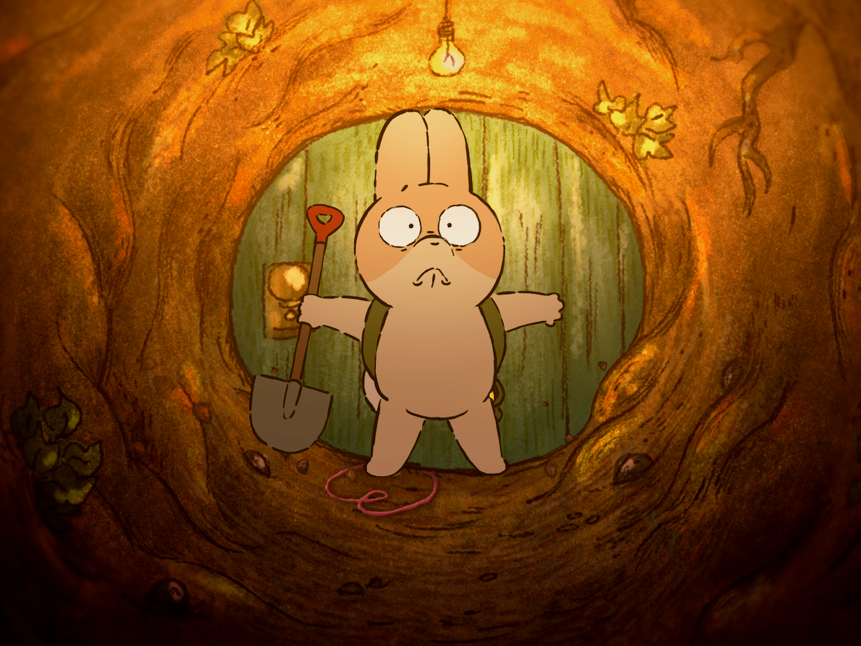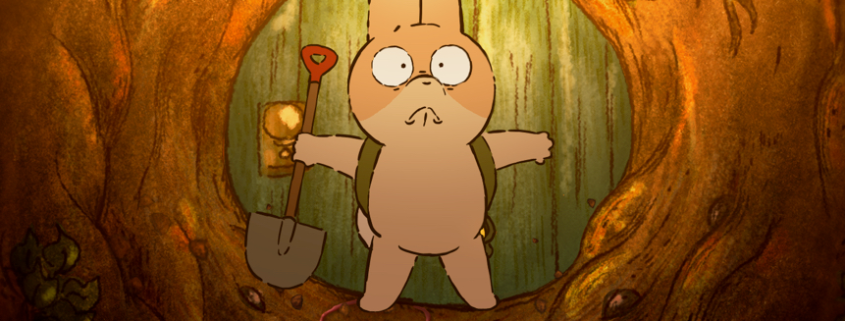Animated: Animated shorts leave long legacies for society

I vividly remember the first and only time I watched the Pixar animated short “Burrow” on the big screen. In my heart, the story occupied far more space than it did in that movie theater.
“Burrow,” directed by Madeline Sharafian, follows a young rabbit who, true to the short’s namesake, wants to dig a burrow. She has plans to create a nice home for herself where she can live in peace. Yet as the rabbit begins digging, it seems like everywhere she goes, there are other animals cohabiting the space with her. These interactions frighten her, so the rabbit keeps digging to find a space where she can be by herself without interruptions.
The rabbit ultimately burrows too deeply, however, and hits a well. All of the burrows will flood unless she acts quickly. The rabbit ends up crying to a badger, desperate for help. With the badger’s assistance, the rabbit warns everyone about the flooding, and the inhabitants collectively redirect the water away and save their homes.
After the success of this joint endeavor, the rabbit bashfully asks if the others can help her build her dream home. They’re happy to pitch in, and at the end, the rabbit has her fantasy burrow. It has a private space like she wanted but is in a shared home. The rabbit finds that having company isn’t so scary after all.
As an introverted only child, I relate a lot to the rabbit in “Burrow.” Like the rabbit, I came to USC seeking a private room. I had an intense fear of being judged by others for how I lived in my own space. I told my parents that I wanted to live in a studio apartment by myself because I envisioned others not liking me from the get-go.
Those anxieties shaped my experiences thinking about college life. The moment that made me think differently, though, was when the rabbit tells the badger about her mistake. The rabbit whimpers and covers her eyes with her ears, mostly because I think she’s terrified of being yelled at for not asking for help or being scared of socializing.
The badger doesn’t do any of that. Instead, the badger boomingly roars and wakes up everyone to help. Of course, the badger holds the rabbit accountable for her actions, but the community works together to solve the problem. It’s a group bonding experience for the animals, and the rabbit finally musters up the courage to make her dream of having her own home into a reality — with the help of all her fellow inhabitants. The rabbit’s actions taught me that you don’t have to alienate yourself just because you’re fearful of how others will react.
“Burrow,” like so many other animated shorts, debuted before a feature-length film in the movie theater. Yet, I would argue that animated shorts aren’t just “appetizers” to open films. Sure, they’re short, but in their own way, they’re satisfying by themselves. They leave us with an abundance of questions to ponder culturally and socially. You can choose to watch animated shorts by themselves and leave feeling just as fulfilled as you would watching a movie that’s two hours long.
As I’m writing this, numerous meaningful shorts come to mind. “Far from the Tree,” for example, looks at the generational challenges of a raccoon family. “Purl” examines gender-based workplace discrimination. Animated stories are a product of culture and society, and we see that in the kinds of stories told. They’re stories about conflicts that are part of everyday life.
Personally, “Burrow” encouraged me to think about the college experience as a communal one. I’m fortunate enough to have a space for myself but in a shared apartment. This means that I’m constantly negotiating with how to communicate my own needs to others and to ask for help. I’m still trying to find out where my “burrow” is, but I know that in the most idealistic sense, I don’t have to figure out everything by myself.
It also means that, like the rabbit, I’m ready to be that badger as best as I can, just as I hope that others will be that badger for me. I trust in the message of “Burrow:” that home is better when there are others who collaborate on building it with you.
I wanted to write “Animated” because I think that for many of us, animation transports us back to our childhoods. Still, there’s no denying that animation remains relevant today even as “adulthood” becomes something all the more real and tangible. Merriam-Webster says that the word “animated” means that something is “endowed with life or the qualities of life.” So, I think watching animation means seeing life, or at least a version of it.
That day in the movie theater, I wasn’t just seeing a story about a young rabbit. I saw a story that was, in many ways, about myself.
Valerie Wu is a junior writing about animation and digital arts from a contemporary perspective. Her column “Animated” runs every other Friday.

